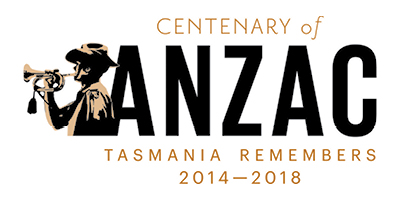The Soldiers Memorial Avenue
The Soldiers Memorial Avenue forms part of the Queens Domain in Hobart Tasmania. It is an memorial avenue comprising 520 trees planted in 1918 and 1919 to commemorate soldiers, mainly from Hobart, who died in the Great War 1914-1918. The trees are predominantly Himalayan Cedar though Atlantic Cedars, Blue Atlas and Italian Cypress are also present (the latter planted as replacements in the 1960s). Further trees were added in 1926 within the Cenotaph precinct, part of a promise that the new war memorial would be connected to the Avenue. In 2001 only 330 original trees remained. Friends of Soldiers Walk Inc. was formed in 2002 to ensure the restoration of the Avenue. It was later renamed FOSMA - Friends of Soldiers Memorial Avenue - as part of the process of restoration.
The Domain
The Queens Domain was gifted by Queen Victoria to the people of Hobart as represented by the Corporation of the City. It is home to many public facilities including the Royal Tasmanian Botanical Gardens, Government House, the Domain Tennis Centre, the Aquatic Centre, the old TCA ground, Crossroads Ovals, the Athletic Centre. In addition there are a number of important historical buildings such as the Gunpowder magazine and the Wireless Institute.
The Walk as it was envisaged.
History of the Avenue of Trees
The Avenue was originally known as the Soldiers’ Memorial Avenue but was renamed Soldiers’ Walk in the 1980s. It is the largest of over 50 commemorative Avenues in Tasmania that have been identified.
The main part of the Avenue consists of four rows of Cedars planted along the eastern slopes. The Avenue begins at the junction of Aberdeen St and the Tasman Highway next to the Aquatic Centre. The first 17 trees are in two rows and commemorate soldiers who died in the Gallipoli campaign. The first tree commemorates Private Arthur Adams, believed to be the first Tasmanian killed at the landing. In all 10 trees were planted for men who died on the first day and three who subsequently died of wounds, one as a prisoner of the Turkish army.
The Avenue then crosses Davies Avenue and broadens to four rows and moves around the Domain and passes between the old Tasmanian Cricket Association (TCA) ground and the Gunpowder Magazine where it narrows to two rows. Beyond this point it broadens once more to 4 rows.
The Crossroads Oval was built over 80 trees in the early 1960s and interrupted the northern part of the Avenue. A small remnant of the Avenue was hidden in a copse of native trees at the Crossroads.This copse has now been cleared and in 2008 a path was laid along the river side of the Oval connecting the Crossroads group with the main Avenue. A matching path was laid in stages from 2010. This created an uninterrupted Avenue with all missing tree sites being replaced.
The process of replacing missing trees along the main Avenue began with the planting of 104 new trees between the Oval and TCA in 2009. In all 55 existing trees in poor condition were replaced. The replacement trees are Cedrus libani (Lebanese Cedars) which are more drought resistant. 2009 saw the wettest winter in Hobart since 1954 so these trees and the whole Avenue received a welcome drink. A further 114 trees were planted in the Southern portion of the Avenue and dedicated in August 2010. A further 120 trees were placed around the Soldiers Memorial Avenue between 2008 and 2014.
The environment
The environment is largely white gum grassland with shallow soils over dolerite and thus well drained. It is prone to drought; a situation worsened by the decreasing summer rainfall over the last 30 years. A least twenty trees visibly deteriorated over the summers of 2002-03 and 2003-04, losing at least 10% of their foliage. The trees put on new growth with heavy spring rains but generally a hot summer means the trees were not able to support this growth in the longer term. The removal of competing vegetation, particularly inappropriate blue gums and invasive wattles, stabilised many trees - making life in dry summers more tolerable.
The Domain is home to a number of rare and endangered plant species which actually thrive under the largest cedars. These create a suppression zone that limits the growth of larger grasses, thus the most exotic protects the rarest natives.
The removal of competing vegetation and slashing of the Avenue footprint has also been beneficial to the grasslands - mimicing grazing and ensuring healthier root systems and promoting spread.
Issues relating to the replacement of missing trees, maintenance of existing trees, replacement species and site interpretation, were all considered as part of the Soldiers Memorial Avenue Management plan endorsed by the Hobart City Council in 2004. All work since then has been in line with that plan.
The Soldiers
The soldiers commemorated on the Avenue come mainly from the Hobart area. Most of the trees were planted under the auspices of the Hobart City Council with 64 planted by the then-New Town Council. Trees were applied for with the qualification being a next-of-kin or other relative in the municipal area. Thus while most trees commemorate men from central Hobart between Upper Sandy Bay and Mt Stuart, there are men from around southern Tasmania, including Bruny Island, and other parts of the State and Australia, planted by widows, siblings and more distant relatives.
Tracing the names and positions of trees has been complex. The process used the newspaper lists from 1918, a HCC map from 1931, the Hobart Town Hall Honour Board and in some instances, family recollection as to position. FOSMA is satisfied that the list is accurate, comprehensive and complete. No new names will be added. This was a process not of creation but of restoration.
More detail about the age, religious affiliation, ranks and units of the soldiers can be found on the facts page in the Soldiers section of the site.





